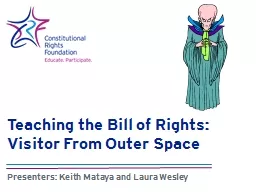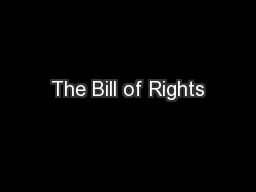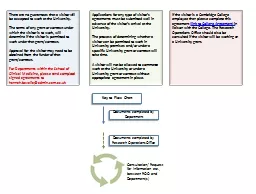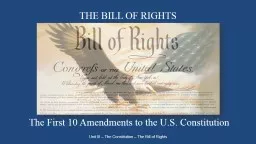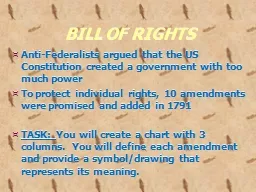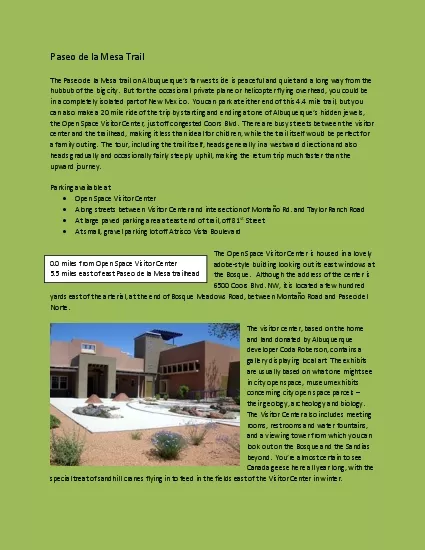PPT-Teaching the Bill of Rights: Visitor From Outer Space
Author : alida-meadow | Published Date : 2018-10-24
wwwcrfcaporg Presenters Keith Mataya and Laura Wesley Constitutional Rights Foundation CRF is a nonprofit nonpartisan national educational organization For over
Presentation Embed Code
Download Presentation
Download Presentation The PPT/PDF document "Teaching the Bill of Rights: Visitor Fro..." is the property of its rightful owner. Permission is granted to download and print the materials on this website for personal, non-commercial use only, and to display it on your personal computer provided you do not modify the materials and that you retain all copyright notices contained in the materials. By downloading content from our website, you accept the terms of this agreement.
Teaching the Bill of Rights: Visitor From Outer Space: Transcript
Download Rules Of Document
"Teaching the Bill of Rights: Visitor From Outer Space"The content belongs to its owner. You may download and print it for personal use, without modification, and keep all copyright notices. By downloading, you agree to these terms.
Related Documents

